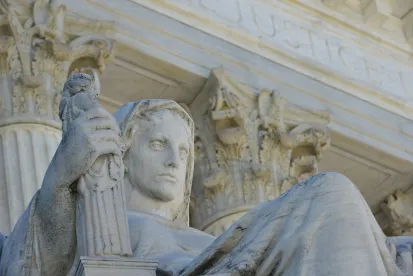Whether the Establishment and Free Exercise Clauses prevent civil courts from adjudicating employment discrimination claims brought by employees against their religious employer, where the employee carried out important religious functions, is the question presented in two consolidated cases before the U.S. Supreme Court: Our Lady of Guadalupe School v. Morrissey-Berru, No. 19-267, and St. James School v. Biel, No. 19-348.
(See our article on the Court’s grant of review, U.S. Supreme Court to Decide Whether ‘Ministerial Exception’ Covers Catholic School Teachers.)
In both actions, the district courts granted the schools’ motion to dismiss on the ground the ministerial exception applied to the plaintiffs and therefore, provided immunity to the schools.
The U.S. Court of Appeals for the Ninth Circuit reversed the lower court decisions in both cases, holding the teachers were not covered by the exception, because neither the teachers nor the schools considered them to be ministers, as reflected in their job titles.
In 2012, the Supreme Court decided Hosanna-Tabor Evangelical Lutheran Church & School v. EEOC, 565 U.S. 171, recognizing the ministerial exception, a First Amendment doctrine that bars civil courts from adjudicating employment-related cases brought by “ministerial” employees against their religious employers. The Supreme Court’s decision in Hosanna-Tabor was unanimous.
In Our Lady of Guadalupe and St. James School, separate panels of the Ninth Circuit indicated an employee’s involvement in religious functions alone could never be enough to prove an employee’s ministerial status.
During oral arguments, counsel for the respondent-employees stated that overturning the Ninth Circuit would remove employment law protections from an estimated 300,000 lay teachers of religious schools.
Chief Justice John Roberts started questioning by probing the limits of petitioner-employers’ position, asking whether it is enough that the teacher is required to “personify” church teachings for the ministerial exception to apply. Petitioner’s counsel attempted to avoid the question, but eventually said no, that is not enough.
Justice Ruth Bader Ginsberg’s questions focused on the circumstances surrounding the direction of teacher Kristen Biel. Biel was terminated after disclosing a cancer diagnosis. Ginsberg stated the federal government provides someone with cancer a right to leave under the Family and Medical Leave Act and questioned whether petitioners suggested that religious organizations did not have to comply with that mandate. In another line of questioning to petitioners, Ginsberg stated she did not see how a cancer diagnosis affected a teacher’s ability to perform her duties as a teacher.
Justice Elena Kagan peppered petitioner’s counsel with a list of hypothetical employees and whether they would fall under the application of the ministerial exception advocated for by petitioners. When responding to these hypotheticals, petitioner’s counsel appeared to embrace the idea that there are “de minimis” religious functions that would not qualify a person for the ministerial exception.
Meanwhile, Justice Neil Gorsuch appeared troubled by the prospect that a court would be required to second-guess a religious entity’s assertions about the religious importance of a particular function.
Justice Samuel Alito expressed a desire to throw out the whole terminology of minister/ministerial exception as it did not appropriately address titles in non-Christian religions, an issue he raised in his concurrence to the Hosanna-Tabor opinion. Similarly, Justice Clarence Thomas asked the employees’ attorneys how they address the ministerial exception, which appears to presume some hierarchy in the teaching of the religion to religions that focus on such structures.
Several times turning oral argument, the Justices expressed concern that the various tests offered by both petitioners and respondents may result in government entanglement in religion.
Justice Stephen Breyer asked a simple question, “What should we write to guide the lower courts?” While respondents did not have a similarly simple answer to this, the Court will issue an opinion that eventually will do exactly that.





 />i
/>i

